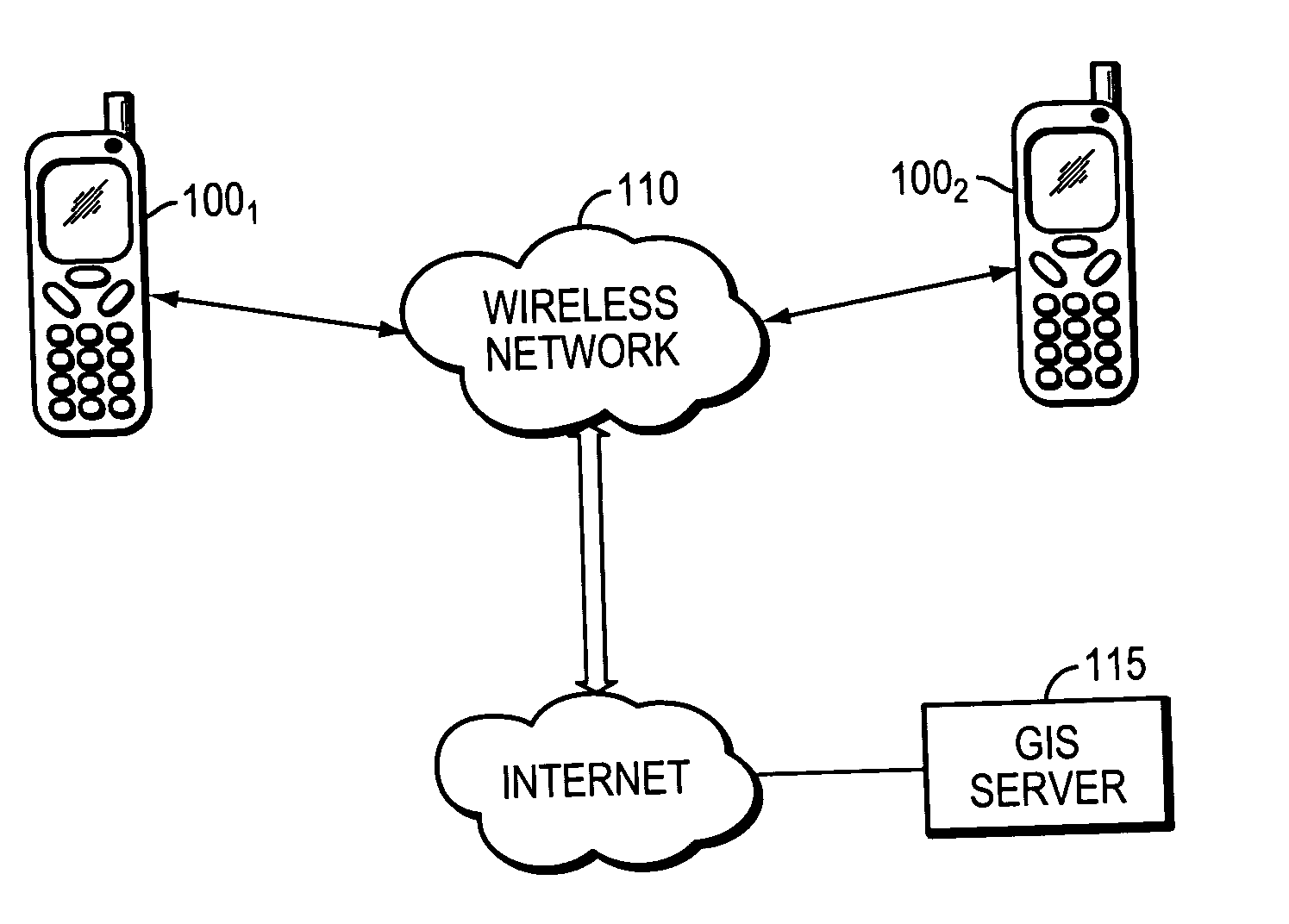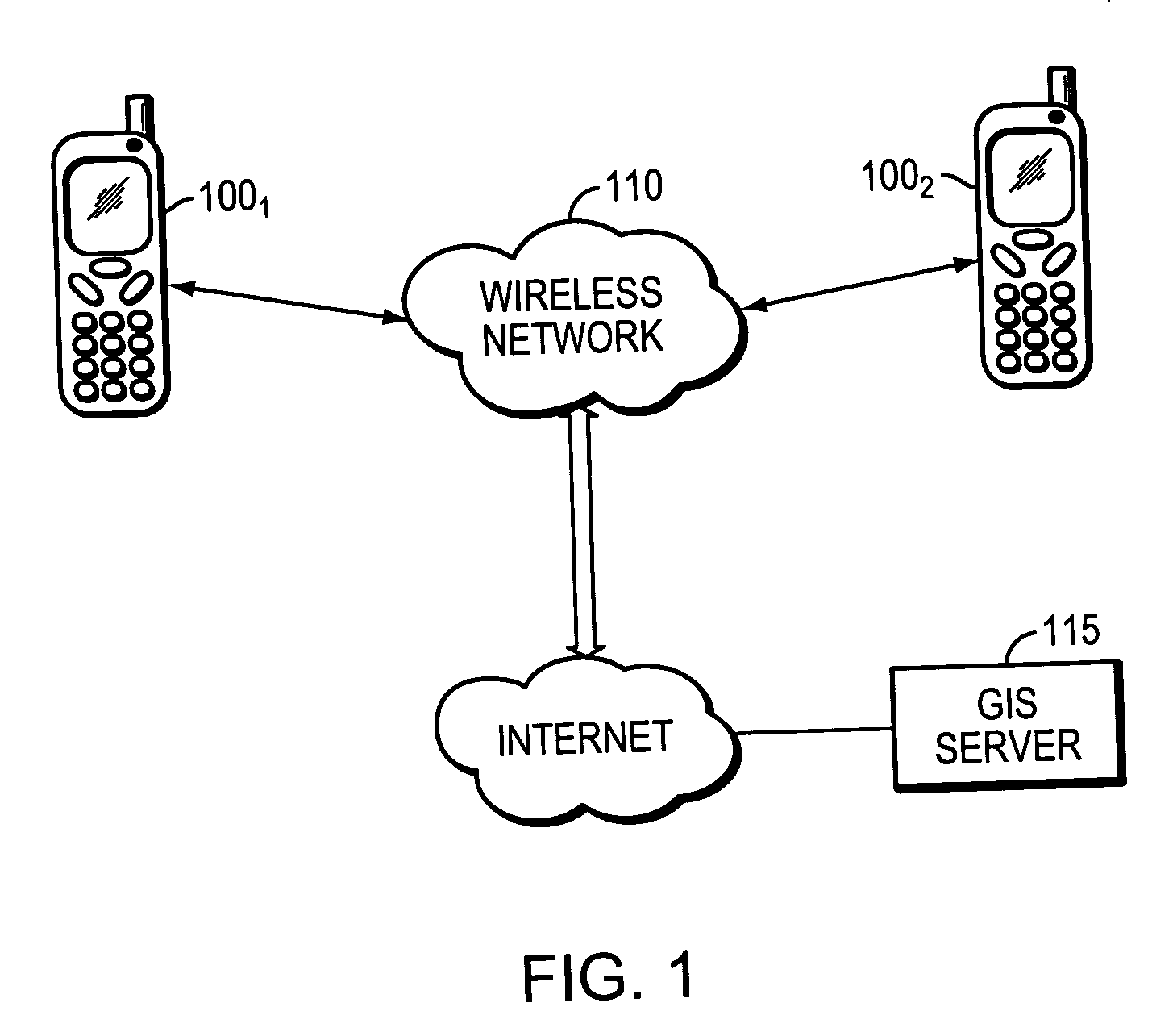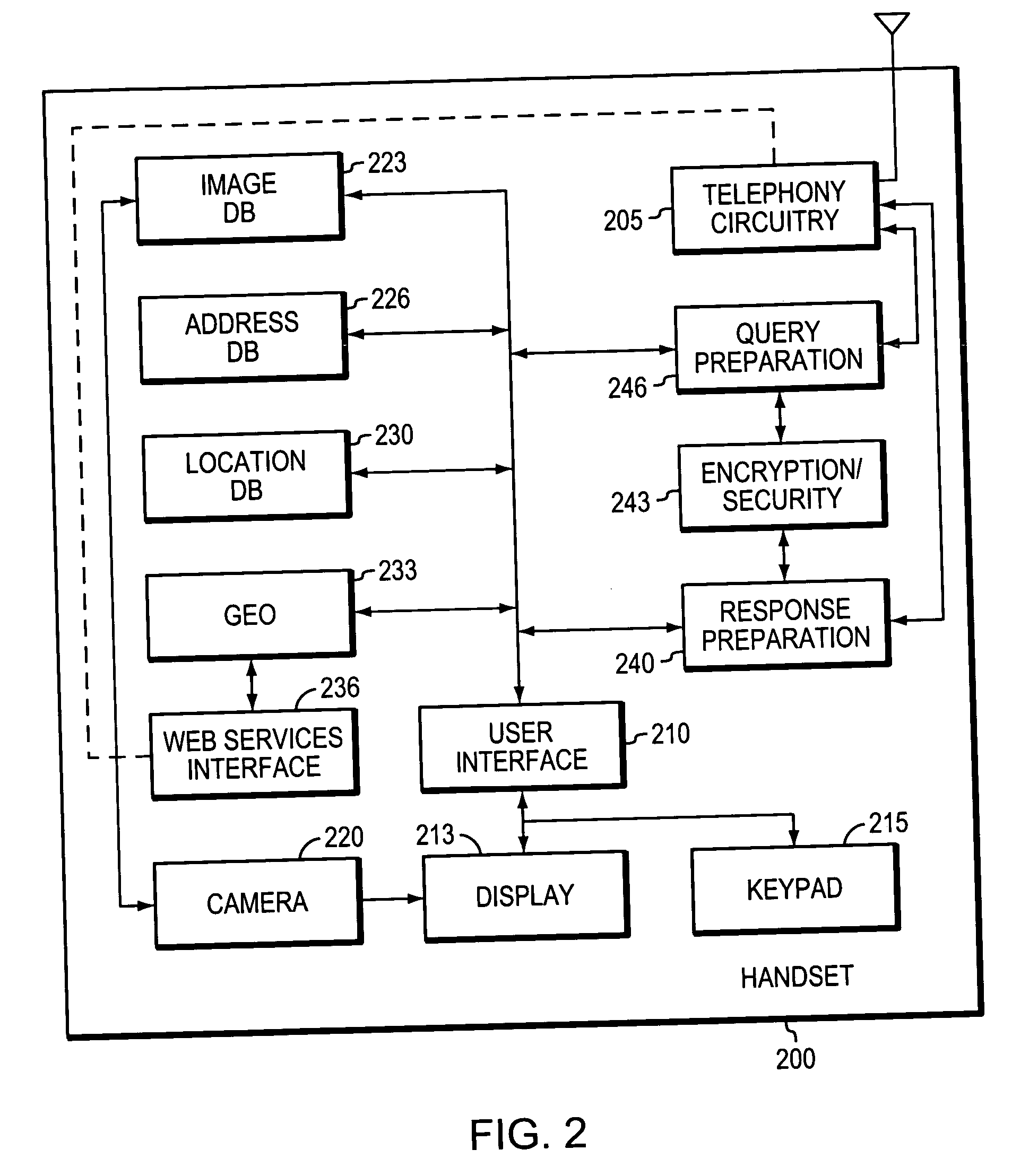Implementation of serverless applications over wireless networks
- Summary
- Abstract
- Description
- Claims
- Application Information
AI Technical Summary
Benefits of technology
Problems solved by technology
Method used
Image
Examples
Embodiment Construction
Brief Summary of the Invention
[0010] The present invention provides a serverless approach to determining the location of a wireless phone from another wireless phone in order, for example, to keep track of the current location of a child, friend or asset. The invention can also be used to determine the current location of the user himself. In some embodiments, a software module is loaded into each phone, and this module, in response to the user's locate command on the querying (e.g., a parent's) phone, sends a message (e.g., a “Short Message Service,” or SMS, message) to the tracked phone requesting a location. In response, the tracked phone determines its location using, for example, the wireless carrier's location-determining technology, preferably encrypts the geographic coordinates, and sends these back to the querying phone (e.g., via another SMS message). It should be stressed that other transport mechanisms can be used to convey the request / response between phones, such as a...
PUM
 Login to View More
Login to View More Abstract
Description
Claims
Application Information
 Login to View More
Login to View More - R&D
- Intellectual Property
- Life Sciences
- Materials
- Tech Scout
- Unparalleled Data Quality
- Higher Quality Content
- 60% Fewer Hallucinations
Browse by: Latest US Patents, China's latest patents, Technical Efficacy Thesaurus, Application Domain, Technology Topic, Popular Technical Reports.
© 2025 PatSnap. All rights reserved.Legal|Privacy policy|Modern Slavery Act Transparency Statement|Sitemap|About US| Contact US: help@patsnap.com



